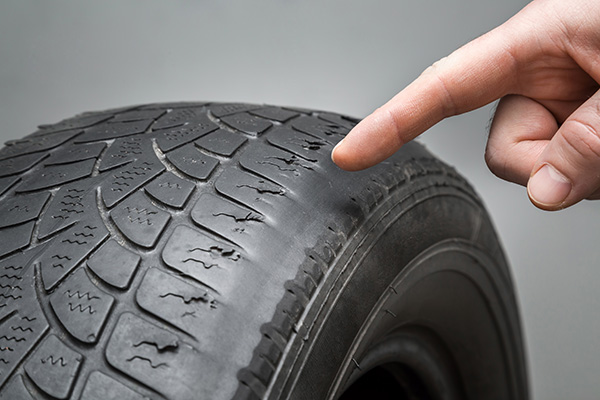
You glance at your tires and they look okay, but does that mean they’re roadworthy? Many drivers assume that if their tires don’t appear obviously worn or damaged, they’re good to go. However, looks can be deceiving. Your tires are the only part of your car that connects it to the road, so maintaining them is essential for safety, performance, and fuel efficiency. So, how do you really know when it’s time to replace them?
Tire Wear Beyond the Surface
Tires are subjected to countless miles of wear and tear, and their condition depends on more than just visible factors. Sure, a quick glance might show tread that looks intact, but there’s more to the story. Internal aging, uneven wear patterns, and hidden damage can all compromise their effectiveness—even if they seem fine at first glance.
One of the most important indicators is tread depth. Tires lose their ability to grip the road as the tread wears down. While most people know about the penny test (inserting a penny into the tread with Lincoln’s head down—if you can see his entire head, it’s time for new tires), this isn’t the only factor to consider.
Even if the tread passes the test, tires have a shelf life. Over time, the rubber hardens and cracks, reducing performance. Most experts recommend replacing tires every six to ten years, even if they look like they’ve got life left in them.
Signs Your Tires May Need Replacing
Cracks and Bulges
Over time, tires can develop cracks in the sidewalls due to exposure to the elements and fluctuating temperatures. Similarly, bulges can appear if the internal structure of the tire is compromised. Either of these issues is a clear sign you need to replace your tires, as they could lead to a blowout.
Uneven Wear
Tires wear down unevenly for several reasons, including misaligned wheels, improper inflation, or a worn suspension system. Even if parts of the tread look fine, uneven wear can cause poor handling and increased stopping distances. Run your hands along the tire surface; if you feel high and low spots or notice one side is more worn than the other, it’s time for a replacement.
Vibrations While Driving
While some road vibration is normal, excessive shaking can indicate a tire issue. This could be due to an unbalanced tire, a bent rim, or internal tire damage. Ignoring these vibrations can lead to further damage, so it’s best to address them sooner rather than later.
Loss of Air Pressure
If you’re constantly refilling a tire, it’s not just an annoyance—it’s a warning sign. Slow leaks can indicate a puncture or structural weakness. Instead of endlessly topping off the air, it’s safer to replace the tire.
How Tire Health Impacts Safety and Efficiency
Driving on worn-out tires isn’t just a personal risk; it’s a hazard for everyone on the road. Tires with inadequate tread struggle to grip the road, particularly in wet or icy conditions. This increases the likelihood of hydroplaning or losing control in sudden maneuvers.
Moreover, compromised tires affect braking distance. Stopping on bald or damaged tires can take significantly longer, putting you and others in danger.
When was the last time you checked your tires? Let Auto Clinic Care take care of it. Our team will ensure your tires are safe, efficient, and ready for every journey. Call us to schedule an appointment!